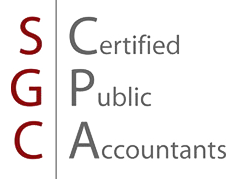
The Situation
TIC-controlled, new construction, 220-unit condominium property
Gramercy Park Condominiums was a new construction, luxury mid-rise, Class A condominium project near Houston’s Texas Medical Center. It contained 224 units built over a level of parking on just less than three acres of land. Unit sizes ranged from 780 to 1,600 square feet.
The construction loan was funded by a mortgage broker/loan servicer who acted as the agent for 332 separate tenant-in-common (TIC) investors holding fractionalized interests. The investors included various entities, such as limited liability companies, family trusts, pension trusts, and single and married individuals. The typical amounts funded by each investor were predominately in the range of $50,000 to $100,000.
During the middle of construction, various entities controlling servicing rights initiated a series of bankruptcies and stopped funding the construction project. This resulted in the property remaining in a partially-completed state while the Lenders entered into lengthy court proceedings. Various entities that controlled the servicing rights went through a series of bankruptcies. Only four of the units were sold, and the remaining 220 units had had been marketed for sale for eight months by another brokerage firm.
The entity who ultimately controlled the servicing rights foreclosed on the property and engaged our brokerage team.
The Approach
Began marketing process via traditional brokerage
During our marketing period, we spent considerable time reviewing legal documents and talking to investors and market participants. This was a complicated transaction with many moving parts, so we needed to understand the past and current situation in order to anticipate and prepare for any future roadblocks to a property sale. A few large real estate groups had bought positions from some original investors. Each of these groups had their own plans for the property if/when they were able to gain control. The situation was similar to activist investors buying stock in public companies.
Through our marketing efforts, 225 prospects signed confidentiality agreements, 75 property tours were conducted, and 24 offers were generated.
We screened offers using the following criteria:
- Offer amount
- Terms
- Cash vs. financing
- Buyer financial strength
- Buyer reputation, including knowledge of submarket and property sector
- Amount of pre-offer diligence conducted
- Intuition regarding buyer’s ability to perform and close quickly at the price being offered
After making our recommendation on a preferred buyer and awaiting a decision from our client (the entity who controlled servicing rights), our client filed Chapter 11 bankruptcy in New York. The proceedings were transferred to Nevada, and ultimately converted to a Chapter 7 bankruptcy case. The court hearings dragged on as the original investors disagreed on whether the property should be sold to a single buyer or sold as individual condominiums to numerous buyers. This extended period of litigation was challenging since it was hard to keep buyers interested in the property when there was a perception in the market that no one would be able to get enough of the investors to agree to sell the property, meaning a purchase transaction would never close.
Gramercy Park Condominiums was a new construction, luxury mid-rise, Class A condominium project near Houston’s Texas Medical Center. It contained 224 units built over a level of parking on just less than three acres of land. Unit sizes ranged from 780 to 1,600 square feet.
The construction loan was funded by a mortgage broker/loan servicer who acted as the agent for 332 separate tenant-in-common (TIC) investors holding fractionalized interests. The investors included various entities, such as limited liability companies, family trusts, pension trusts, and single and married individuals. The typical amounts funded by each investor were predominately in the range of $50,000 to $100,000.
During the middle of construction, various entities controlling servicing rights initiated a series of bankruptcies and stopped funding the construction project. This resulted in the property remaining in a partially-completed state while the Lenders entered into lengthy court proceedings. Various entities that controlled the servicing rights went through a series of bankruptcies. Only four of the units were sold, and the remaining 220 units had had been marketed for sale for eight months by another brokerage firm.
The entity who ultimately controlled the servicing rights foreclosed on the property and engaged our brokerage team.
The Solution
Successful disposition via 363 auction
Our team assisted the Chapter 7 Bankruptcy Trustee with the preparations for a bankruptcy auction of the property. We were critical to the auction process and were able to identify and negotiate terms with the all-cash stalking horse bidder who we originally recommended. This bidder won the 363 auction. The court granted an investor-sponsored group the right to buy the property, but it was unable to perform so the stalking horse bidder closed on the asset.
As part of a bankruptcy case, our team researched and wrote a white paper detailing the Houston condominium market. The judge referenced the white paper while issuing his verdict.
The investors received a recovery of their original investment after experiencing a long and arduous process that took many twists and turns.
The stalking horse bidder ultimately completed construction of the property, bought back the four previously-sold units, and operated the property as a multifamily rental for several years prior to selling it.





































